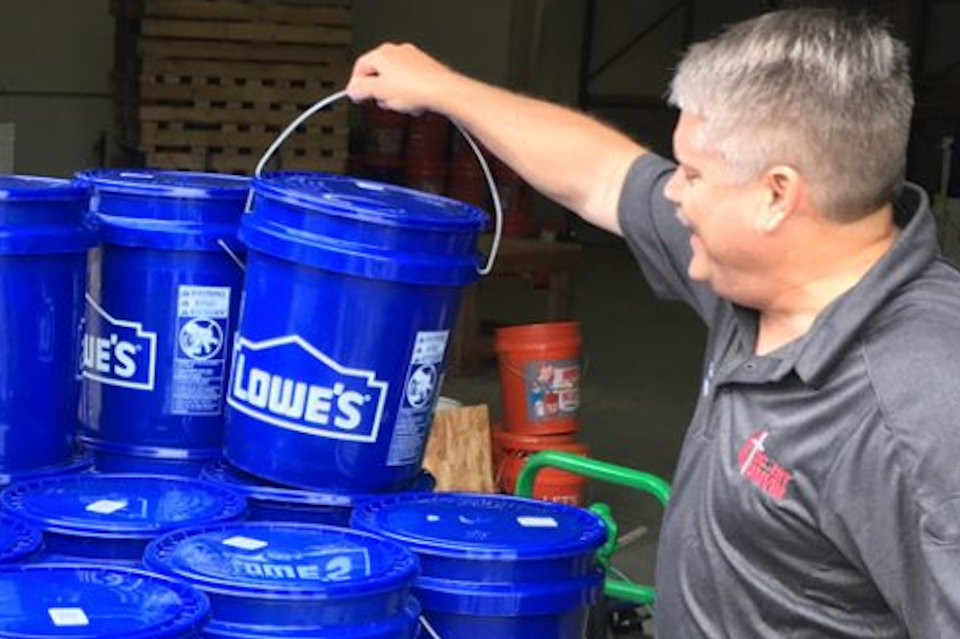First responders. Early Response Teams. Volunteers in Mission. There’s a time and a place for all to help. Here’s how “helping” works.
DAN O’MALLEY
Disaster Response Coordinator, Michigan Conference
September 13, 2018 |Disasters have a way of creating new tension in our hearts. We want to provide the help we think people need and we have to respond immediately. But our desire to help people in need can end up hurting the people we want to help.
So how can I help without hurting? Let’s start with the definition of a disaster from the UMCOR training guide.
A disaster is any specific event which results in overwhelming physical, economic and/or emotional damage to a community. There are many types of disasters such as: natural, technical and economic, civil, accidental, terrorism, pandemics and war. Hurricane Florence is a huge natural disaster, a storm devastating countless communities.
In addition, there are “Phases” of disasters.
- Readiness or preparedness for an imminent natural disaster is the first phase where communications, actions plans and prepositioning of aide equipment, personnel and supplies are readied to minimize damage and loss of life.
- Rescue/emergency is the phase that covers the period during and immediately following a disaster. During this phase, public officials and skilled first responders provide emergency assistance to preserve life and property.
- Relief phase immediately follows the rescue/emergency phase and sometimes the two activities may coincide. In this phase, work is done to help prevent any further damage from occurring. Families may be allowed to return home or may be in temporary shelters. Early Response Teams (ERTs) may be activated at this time at the request of the local disaster coordinator through your Conference Coordinator. We never go to help without such a request and training in early response. Typically teams of eight people clean up debris, muck out basements, tarp roofs, board up windows and doorways and provide a listening ear to the survivors.
- Recovery phase follows the time of providing relief work. It continues until all systems return to a new or near normal operations. Rebuilding homes that have received damage to basements, floors, walls, windows and roofs are typical Volunteer in Mission team work. Long term recovery may go on for months or even years until the entire disaster area returns to a new or near previous normal conditions.
- Review occurs after each phase and at the completion of the recovery effort. How can we improve our planning, preparation, and response for the next event?
There is a “Rule of 10” that helps put the duration of time from rescue to recovery into perspective. If the Rescue phase takes three days, the Relief phase will take 10 times the three days (or 30 days). The Recovery phase will take 10 times the 30 day Relief phase (or 300 days).
Right now Hurricane Florence is still in the Rescue/Emergency Phase. Here are four good ways to help at this stage.
- Donate to the UMCOR Distribution Center through their donation portal for items on their wish list as 100% of the money goes to relief and recovery items
- Donate Cleaning Kits and Hygiene Kits materials through a conference-wide program as we did in 2017. (See below and click here for collection sites.)
- Volunteer to serve a day or a week working at the Midwest Mission Distribution Center. Forms are on their website.
- Volunteer to be trained as an Early Response Team member by contacting Bob McCormick [email protected] or Pastor Bob Freysinger [email protected].
Later during Relief and Recovery phases. To participate in long term recovery efforts contact Dan O’Malley Conference Disaster Relief Coordinator [email protected]. To deploy as a Volunteer in Mission, contact Jody Pratt [email protected].
Brad Walton, the supervisor of the Mission Midwest Distribution Center (MMDC) in Chatham, IL, has instructions for how can we help and not hurt with our donations. For both Cleaning kits and Hygiene kits, MMDC want the 5 gallon pails and individual items packaged in BULK rather than in kits! Volunteers at MMDC are very efficient in assembling the kits. They only handle the material once instead of twice as kits that come assembled to MMDC are unpacked and inspected prior to shipment. Box trucks and trailers can be quickly unloaded with their equipment. Important note: call or email the distribution center 24 hours prior to your arrival to confirm a delivery time; Ph 217.483.7911 or [email protected].
Your best intentions can hurt the process. Follow instructions. Prepare. Don’t show up unannounced. Thanks for your efforts to help without hurting.
Last Updated on November 1, 2023

